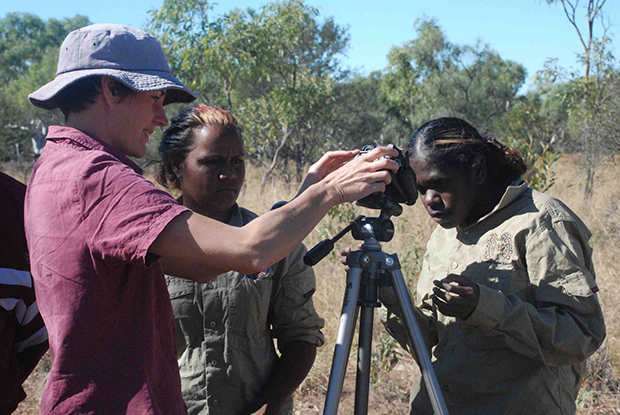Endangered languages at high risk
A world-first study warns 1,500 endangered languages could be lost by the end of this century.
The study, from The Australian National University (ANU) and The University of Queensland, identified a range of factors that put endangered languages at high risk.
Co-author Professor Felicity Meakins from UQ’s School of Languages and Cultures said the diversity of the world’s languages was truly breathtaking, but is under great threat.
“Of the approximately 7,000 languages still spoken, nearly half are at risk of disappearing completely,” Professor Meakins said.
“Without intervention, language loss could triple within 40 years, equivalent to a language lost per month for the rest of this century.”
ANU’s Professor Lindell Bromham said findings showed the need to build curricula that supports bilingual education, fostering both Indigenous language proficiency as well as use of regionally dominant languages.
“Surprisingly, we also found that the more roads there are, connecting country to city, and villages to towns, the higher the risk of languages being endangered,” Professor Bromham said.
“It’s as if roads are helping dominant languages ‘steam roll’ smaller languages.”

The researchers said the findings also outlined important lessons for preserving many of the endangered languages spoken by Australia’s First Nations peoples.
“Australia has the dubious distinction of having one of the highest rates of language loss worldwide,” Professor Meakins said.
“Prior to colonisation, more than 250 First Nations languages were spoken, but now 40 languages are still spoken and just 12 are being learnt by children.
“In many places, including Australia, languages have been silenced as the result of brutal colonial policies designed to suppress Indigenous languages, for example punishing Indigenous people for speaking their language or placing children into dormitories.
“These experiences were traumatic and have had lasting consequences for the ability to pass on language.”
Professor Meakins said First Nations languages also need funding and support.
“Australia only spends $20.89 annually per capita of the Indigenous population on languages, which is abysmal compared with Canada’s $69.30 and New Zealand’s $296.44,” she said.
Professor Bromham said that as the world enters the UNESCO Decade of Indigenous Languages in 2022, the study’s findings were a vital reminder that more action was urgently needed to preserve at-risk languages.
The paper is published Nature Ecology and Evolution.
Image above left: Felicity Meakins (right) works with Gurindji rangers Helma Bernard and Ursula Chubb to record Gurindji ecological knowledge. Credit: Brenda L Croft

